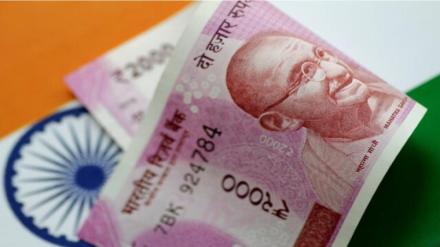The Centre on Thursday announced a plan to borrow Rs 6.61 lakh crore from the market in the second half of the current fiscal year, as part of its plan to finance the fiscal deficit. This accounts for 47.1% of the projected gross market borrowings for the current financial year, is in sync with the budgeted programme, and broadly in line with market expectations.
The H2 borrowing will be conducted through bonds with maturities of three, five, seven, 10, 15, 30, 40 and 50 years. It will also include green bonds worth Rs 20,000 crore. “The demand for green bonds was low in the H1. We need to see if that improves in H2,” economic affairs secretary Ajay Seth said.
Though the overall deficit financing plan unveiled in the Budget also included raising monies via sovereign gold bonds (SGBs), an official said “decision is to use (them) as and when required.” Reports had indicated the government wasn’t keen to use the SGB route, due to its high cost and other considerations.
The borrowing plan per se is unlikely to significantly alter the current market sentiments. Indian government bonds have been among the best performers in Asia so far this year, supported by foreign inflows of about $13 billion, spurred by the inclusion of sovereign notes into JPMorgan Chase & Co.’s emerging market bond index. Hopes of a rate cut from the Reserve Bank of India, especially after the recent move by the Federal Reserve has also boosted sentiments, besides lower oil prices. The yield on benchmark 10-year bond has declined by more than 40 basis points this year, the most in Asia after China. The yield fell to as low as 6.71% on Thursday, a level last seen in February 2022.
The Centre had projected gross market borrowing of 14.01 lakh crore for 2024-25. Of this, Rs 7.4 lakh crore were scheduled in the first half of the year as plans for Rs 10,000 crore via sovereign green bonds were dropped due to tepid demand. The actual borrowings, sources said, could be slightly lower than the estimate.
The fiscal deficit is estimated to be Rs 16.13 lakh crore (4.9% of GDP) in FY25. This, as per the Budget, is to be funded through net market borrowings of Rs 11.63 lakh crore, securities against small savings of Rs 4.2 lakh crore and SGBs of Rs 15,000 crore along with other routes.
The Centre’s cost of borrowing through dated securities has been around 7% and up to 8.2% through various NSSF schemes in the last couple of years, whereas the cost of borrowing via SGBs was as high as 12%. The three-year, five-year and seven-year bonds will constitute a combine of 23.5% of total H2 borrowing, while the 10-year and 15-year bonds would constitute 24.8% and 13.2% respectively.
The share of 30-year and 40-year bonds would be at 12.1% and 15.9%, while that of 50-year bonds would be 10.6%.
“To smoothen repayments of borrowing of the two pandemic years, we would make necessary adjustments in dated security borrowings going forward. This will help the government to observe its prudential limits in annual debt repayment. This approach was adopted in the H2 calendar also,” Seth said.
The Treasury-Bill (T-Bill) borrowings have been moderated considering the current holding level and estimated cashflows, he added. T-Bills of various maturities worth Rs 2.47 lakh crore is estimated to be issued between October and December 2024.
“Aided by the favourable outlook for revenues and a possible undershooting of the ambitious capex target, ICRA expects the GoI’s fiscal deficit to print in line with or mildly trail the FY25 budget estimate of Rs 16.1 trillion or 4.9% of GDP, at the current juncture. Therefore, the market borrowings appear unlikely to exceed the announced level for H2 FY25,” ICRA chief economist Aditi Nayar said.
